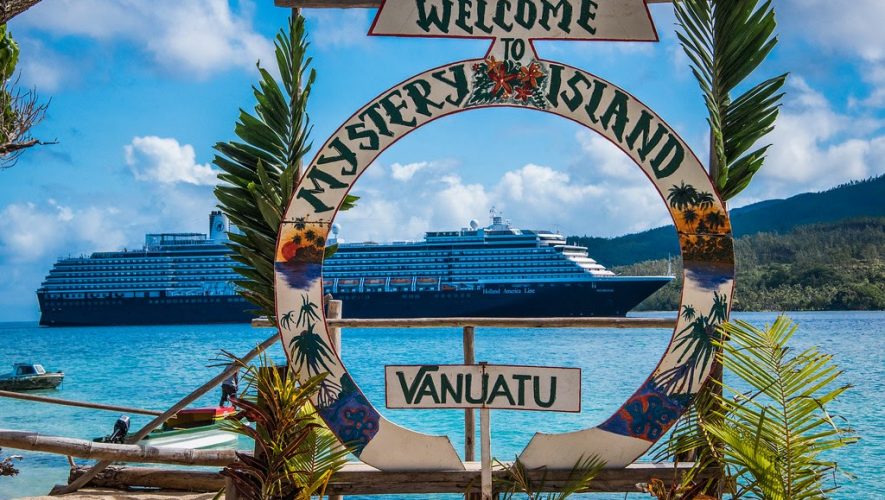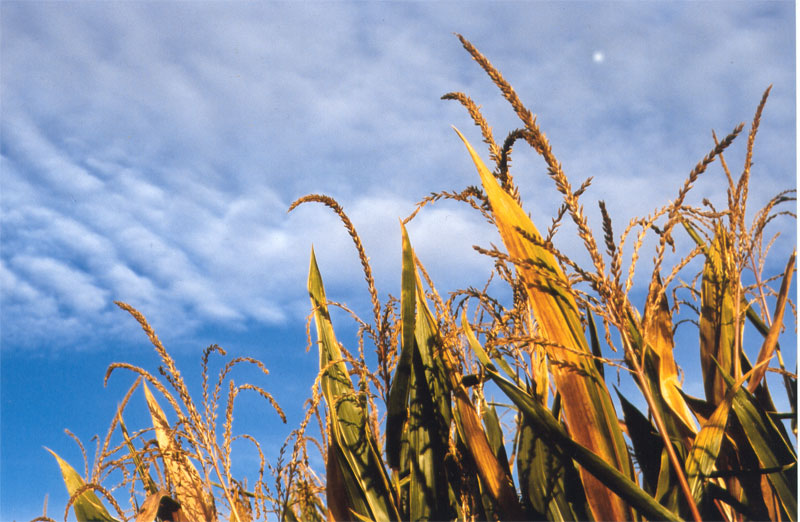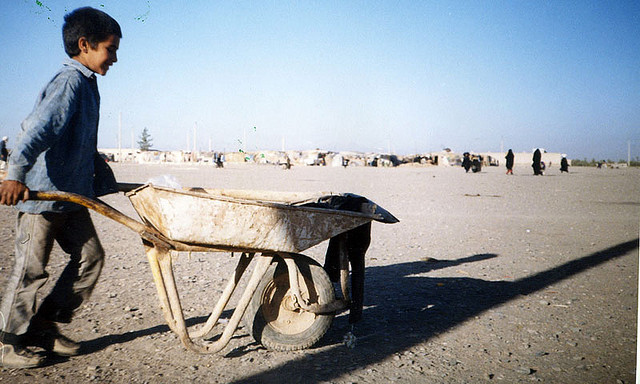Until recently, climate change has always been a future problem. With most countries addressing climate change at a painfully slow pace, coupled with “gravely insufficient” policies, the recent uptick in support and concern worldwide is positive.
In 2020, 52 percent of US citizens listed global climate change as their top priority, compared to 30 percent in 2008. In Europe, 93 percent see climate change as a serious problem. Increasing global concern, improving environmental policies, and more consistent follow-through from national governments have instilled hope in the climate-conscious. Yet, for many vulnerable populations, it is too little too late.
Among the most vulnerable are Pacific islanders. The Pacific island region includes the small island developing states (SIDS) of Micronesia, Melanesia, and Polynesia, stretching from Papua New Guinea to Easter Island. Most islands in the Pacific are barely above sea level, leaving them acutely vulnerable to sea-level rise, storm surges, extreme weather events, and droughts, amongst other environmental hazards.
Some islands in the Pacific are already becoming uninhabitable, and that number is only increasing. This reality is especially troubling when considering the region produces only 0.3 percent of global greenhouse gas (GHG) emissions. A dilemma that Pacific islanders barely contribute to is stealing their native lands, livelihoods, and cultures.
The situation in the Pacific is dire. Despite this, in the face of climate adversity, Pacific island nations’s adaptation and mitigation proposals are among the most promising. World leaders and citizens alike should be cognizant of Pacific islanders’s struggle, as both share the responsibility to fight against climate change.
Climate Change in the Pacific Region
According to the Intergovernmental Panel on Climate Change Fourth Assessment Report, SIDS are left most susceptible to the damaging effects of climate change. In particular, the Pacific region is among the most vulnerable. Pacific island states have already experienced severe revenue loss in some of their largest sectors—agriculture, tourism, forestry, and water resources being only a few examples. Climate change threatens coastal infrastructure, subsistence crops, fisheries, local ecosystems, and islanders’s ways of life.
With Pacific island states already facing challenges with sustainable urban development and land use, rising sea levels and increasing extreme weather events exacerbate problems that these countries are struggling to address. For example, Fiji could experience economic losses between 23-52 million dollars annually by 2050, a large loss when considering the island’s 2019 GDP of 5.496 billion USD and its already declining annual growth.
Pacific islanders’s personal lives are being affected as well. In an interview with NPR, Claire Anterea, a climate activist from Kiribati, describes that she can “see the sea getting higher as the coastal areas are eaten away . . . My family’s home floods throughout the year.” Leitu Frank, a resident of Tuvalu, says that “before, the sand used to stretch out far, and when we swam we could see the sea floor, and the coral. Now, it is cloudy all the time, and the coral is dead. Tuvalu is sinking.”
According to the Tuvaluan government, as of 2019, two of the country’s nine islands were already on the verge of submerging. In addition, water and food supplies in parts of Tuvalu have become polluted enough to cause climate-related illnesses. Further, frequent droughts contribute to food insecurity, the weather is becoming exceedingly unpredictable, and storm surges occur more often and with increasing intensity. Some scientists suggest Tuvalu could become uninhabitable in fifty to one hundred years. The grave situation in Tuvalu is reflective of the reality all Pacific island nations are facing.
To add to the problem, COVID-19 left the Pacific islands more vulnerable than ever. Pacific island nations fared better than most regarding health, due to their remote nature. However, the economic devastation left in the pandemic’s wake poses an immense threat. With international tourism being a major source of revenue, Pacific economies will face severe economic repercussions in the coming years. Pacific governments’s inability to instill protections for islanders and industries has contributed to the problem. Fiji’s economy alone could contract by around 20 percent.
In conjunction with displacement and destruction from climate change, this unexpected economic downturn is a recipe for disaster. According to the Solomon Islands Environment Minister, Melchior Mitaki, “Relocation is often perceived as a last option. Yet for some parts of our country, it is the only reasonable and sustainable option.” Relocation only adds to the economic instability of Pacific island nations. Brain drain already damages many industries in the Pacific, including vital sectors such as healthcare. Additionally, relocation and migration come with the loss of traditional Pacific identities and cultures, which many islanders are rightfully unwilling to abandon. Pacific island traditions have strong ties to native land, a relationship that can never be replaced.
Pacific Islanders’s Response
Climate change is a global issue that requires a cohesive, global response. But like most global phenomena, those affected the most are being listened to the least. While international concern is rising, and aid to the Pacific has generally increased in recent years, it is still not nearly enough to prevent further severe damage.
Despite a slow and ineffective global response, Pacific island states have taken the initiative to create innovative measures to protect themselves and rally the international community to take action alongside them.
The international community often overlooks innovation in the Pacific islands due to Western scientific biases. But the adaptations Pacific islanders are making at local to national levels have applicability worldwide. Traditional knowledge, often thousands of years old, make Pacific islanders’s solutions unique in perspective and exceptionally successful.
The wealth of knowledge that Pacific communities contribute, combined with new technology, produces solutions such as salt and heat-tolerant crops, reintroduction of traditional wells, and the use of GIS technology to map vulnerable flora and fauna for protective purposes. These ecosystem-based adaptations (EBAs) have significant benefits, including securing water to help communities facing droughts, ensuring food and fisheries provisions, and protecting islanders from natural hazards.
In the Federal States of Micronesia—specifically on the island Oneisomw—traditional well system revitalization provides cleaner water to the island’s residents and ensures water accessibility, even for those who do not have personal wells. The wells include a vegetation buffer and concrete walls to prevent sedimentation and run-off pollution. Widespread measures like this can not only lessen the damage done to water systems due to climate change, but increase water security.
However, most Pacific island states do not have the governmental organization and power needed to expand these policies to a national scale. Governance aid and guidance from local leaders like those in Oceania is a simple step that developed countries can take to support the Pacific; these states will also benefit from learning about sustainable practices that are domestically applicable.
Traditional farming methods, combined with modern knowledge of agroforestry, can reduce agriculture’s contribution to climate change and increase food security all at once. NGOs and women’s empowerment groups have worked with local agriculture authorities in Ahus, Papua New Guinea to install household gardens and teach sustainable farming methods. These methods help reduce emissions, water usage, and pollution, increase local women’s income from agriculture, and reduce islanders’s reliance on fisheries. Explorations in low-cost aquaculture in Ahus work to sustain food diversity and protect coastal fisheries from depletion.
In Palau, the Melekeok community developed a climate-smart development document in cooperation with local NGOs. This document will prepare the island’s currently vulnerable infrastructure for the effects of continued climate change and build resilient, sustainable infrastructure for the future. The development guide includes initiatives like incorporating sustainability into the state’s housing and leasing program. For example, the guide suggests residents install water systems that combat drought vulnerability, utilize renewable energy sources, and vegetate bare soil to prevent runoff and sediment deposits. A national loan program funds these initiatives.
The Pacific region’s adaptation and mitigation methods are promising, and these are only a few examples. It is important to note that all of these advancements developed in states that face various challenges due to their remote nature, lack of financial or technical resources, and ever-changing governmental structure. Not only are developed, higher-emitting states capable of supporting adaptation and mitigation efforts in the Pacific, but they are also well-equipped to apply these policies, and more, domestically.
Regarding GHGs, SIDS’s leaders are vocal and persistent about effective climate policy. Despite minimal contribution, Pacific island states continue to take the initiative to reduce GHG emissions wherever possible. Their mitigation efforts are often more ambitious than those of countries contributing higher amounts. These efforts set an example for the rest of the world.
Many Pacific island states are also active members of regional bodies, such as the Pacific Island Forum and the Alliance of Small Island States, which have done extensive work to address climate concerns and create a unified front.
Despite occasional breakthroughs in international policy, world leaders of high-emitting states leave Pacific leaders feeling unheard and cast aside. In the words of Soseala Tinilau, Tuvalu’s Director of the Environment Ministry, “the world want[s] to ignore us. They want to keep behaving as if we don’t exist, as if what’s happening here isn’t true. We can’t let them.”
The Situation Today
The crises Pacific island states face are not just warnings or premonitions for the rest of the world. The international community must prioritize effective and fast-acting climate solutions, apply them on the largest scale possible, and defend Pacific islanders’s right to live safely on their native land.
It is not Pacific islanders’s (or any other vulnerable communities’s) responsibility to teach or coddle the international community, especially considering their minimal contribution to the climate crisis. Despite that, Pacific island leaders and communities have been adamant, determined, and willing to lead the global effort to address climate change. It is imperative that the global community, especially major contributors to climate change, accept the advice, information, and warnings that SIDS can provide. In the words of Victoria Keener, a climate research fellow in Honolulu, “what the islands need in addition to adaptation assistance are strong commitments and real action from the countries that are the biggest emitters.”
Climate change is not a future problem. The UNHCR estimates that more than 20 million people each year are displaced within their countries because of environmental disasters or hazards. Australia and other states belonging to the Nansen Initiative, a coalition started in 2012, are developing recommendations for accepting migrants and refugees displaced by environmental hazards as the need for protections for environmental refugees becomes increasingly relevant. The focus of their work is attempting to facilitate “migration with dignity.”
But is there any dignity in forcing Pacific islanders from their land to save them from crises they did not create? Additionally, for countries like Australia and the United States, is there any dignity in accepting migrants from islands that they played a role in devastating, both in the past and present?
In 2019, in response to Fiji’s offer of land to environmental migrants from Tuvalu, the former Tuvaluan Prime Minister Enele Sopoaga said the following: “Moving outside of Tuvalu will not solve any climate change issues . . . If you put these people in the middle of industrialized countries it will simply boost their consumptions and increase greenhouse gas emissions.” While displacement is becoming a requirement for many islanders’s survival, Sopoaga’s sentiment rings true. The global community cannot wait until life in the Pacific is impossible. Pacific identity, culture, and land deserve to be preserved and protected.
Most importantly, it is the responsibility of every nation and every individual to mitigate their contributions to climate change. What is occurring in the Pacific will soon affect every global citizen, assuming it is not already. We may have already passed some environmental “tipping points,” thresholds from which, once passed, Earth’s ecosystems can no longer return. Climate action is and will always be a collective effort. We all should be rallying behind Pacific islanders and vulnerable peoples elsewhere in their continuous fight against climate change. Not only to protect their futures, but ours as well.



